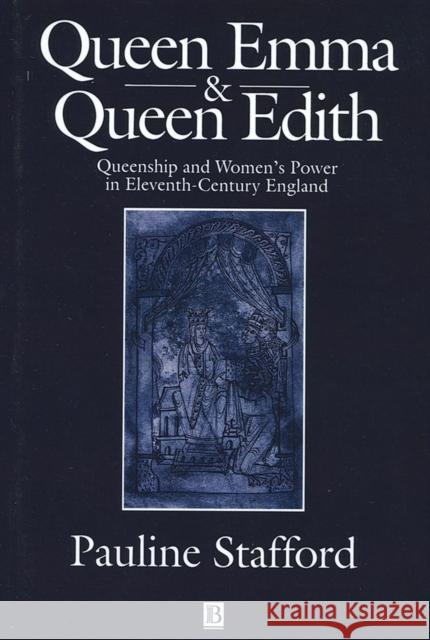Queen Emma and Queen Edith » książka



Queen Emma and Queen Edith
ISBN-13: 9780631227380 / Angielski / Miękka / 2001 / 384 str.
Queen Emma and Queen Edith
ISBN-13: 9780631227380 / Angielski / Miękka / 2001 / 384 str.
(netto: 189,69 VAT: 5%)
Najniższa cena z 30 dni: 197,95
ok. 30 dni roboczych
Dostawa w 2026 r.
Darmowa dostawa!
Through detailed study of these women the author demonstrates the integral place of royal queens in the rule of the English kingdom and in the process of unification by which England was made.
There is much learning, originality and, indeed, entertainment in Pauline Stafford′s
Queen Emma and Queen Edith...This book develops a most interesting subject with learning and insight which illuminate the period as a whole." (
English Historical Review)
"It provides fascinating insights into medieval family structures, the manipulation of saints′ cults, the nature of royal estates and patronage, to name but a few of its themes. Anyone who wants to understand the power structures of the early Middle Ages will want to read it." (History)
"The stories of Queen Emma and Queen Edith are satisfyingly rich in the telling in Pauline Stafford′s latest book, Queen Emma and Queen Edith. The sources which provide these riches are varied and Stafford′s use of them masterly." (Parergon)
"Readable and learned, it is an admirable illustration of the way in which gender studies may be used to enrich understanding of the whole history of a period." (Times Higher Education Supplement)
"It will become an indispensable tool on undergraduate courses dealing with gender, power and politics in the middle ages ... It also represents a clear, elegantly written and meticulously documented contribution to the study of the eleventh (and tenth) century in England." (Gender and History)
"(Stafford) has used her two queens to suggest a great deal, not only about queens and court politics in eleventh–century England but also about the society and politics of a whole period of west European history." (Lady Margaret Hall, Oxford: The Brown Book)
List of Figures.
Preface.
Acknowledgements.
Part I: The Stories. .
Prologue.
1. Emma and Edith in the Narratives of the Eleventh Century.
2. Emma′s and Edith′s Narratives.
Part II: The Structures. .
3. The Faces of the Queen.
4. Family: Structures and Ideals.
5. Household, Land and Patronage.
6. Queen and Queenship.
7. The Fluctuating Power of the Queen: Witnessing and Identities.
Part III: The Lives. .
8. Emma.
9. Edith.
Appendix I The Lands and Revenues of Edith in Domesday Book.
Appendix II Emma′s and Edith′s Household Followers.
Appendix III Genealogical Tables.
Bibliography.
Index.
Pauline Stafford was born and educated in Leeds and received her first degree and doctorate from Oxford University. She now holds a personal Chair at the University of Huddersfield. She is author of numerous articles on early English history, and on the history of early medieval women. Her previous books include Queens, Concubines and Dowagers (1983) and Unification and Conquest: A Political and Social History of England in the Tenth and Eleventh Centuries (1989). She was consultant editor of The Biographical Dictionary of British Women (1996) and is a member of the editorial Collective of Gender & History. She is married with three children.
This is the first full–scale biography of two early English queens: Emma, queen first to Aethelread and then to Cnut, and Edith, queen to Edward the Confessor. Through detailed study of these women the author demonstrates the integral place of royal queens in the rule of the English kingdom and in the process of unification by which England was made.
The careers of Emma and Edith span the troubled decades of eleventh–century English history, and the book reassesses their role in the story of foreign conquests, succession dispute and political murder. Their biography is illuminated by a detailed study of the structures of tenth– and eleventh–century English Queenship – motherhood, marriage, inheritance and succession, the royal household and patronage, consecrated and holy Queenship. It moves from the partial stories told of them by others, and the unique narrative worlds they themselves commissioned, to a new and detailed biography in which Emma especially emerges as one of the most significant political actors of her day and in which both women are shown as both imprisoned by but contesting the inexorable female lifecycle.
The book is an important contribution to our understanding of eleventh– and twelfth–century rule but also of medieval England in general, and, crucially, the role of women within that world.
1997-2025 DolnySlask.com Agencja Internetowa
KrainaKsiazek.PL - Księgarnia Internetowa









